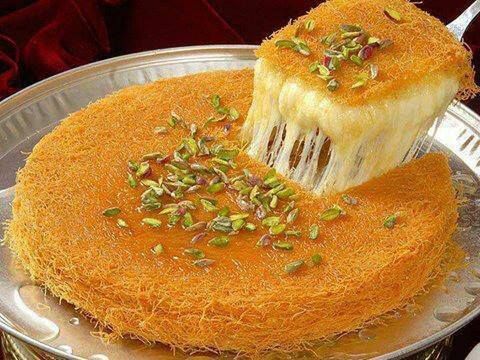Introduction: Jordanian Cuisine and Its Desserts
Jordanian cuisine is a reflection of the country’s diverse history and geography. With influences from neighboring countries and the Mediterranean region, Jordanian food is known for its delicious flavors and unique combinations of spices and herbs. However, desserts and sweets also play an essential role in Jordanian cuisine, and are an inseparable part of the country’s culture and traditions.
In Jordan, desserts are commonly served after meals, during special occasions, and as a hospitality gesture to guests. Jordanian desserts are characterized by their rich and sweet taste, their use of traditional ingredients such as dates, pistachios, and rosewater, and their elegant presentation, which often involves intricate designs and patterns.
The Role of Sweets in Jordanian Culture
Sweets and desserts hold a significant place in Jordanian culture. They are an expression of hospitality and generosity, and are often served to guests as a sign of respect and appreciation. Jordanian sweets are also a symbol of celebrations and special occasions, such as weddings, Eid Al-Fitr, and Ramadan.
In addition, sweets and desserts in Jordan carry a historical and cultural significance. Many of the traditional recipes have been passed down through generations, and are linked to specific regions or communities in the country. Furthermore, sweets and desserts are often associated with religious and spiritual practices, such as the preparation of Ma’amoul during Easter and Eid Al-Fitr.
Traditional Jordanian Desserts: From Baklava to Knafeh
Traditional Jordanian desserts are a feast for the senses, combining rich flavors, textures, and aromas. Baklava, a pastry made of layers of phyllo dough and nuts, is a beloved dessert in Jordanian cuisine, as well as in many Middle Eastern countries. Another popular dessert is Knafeh, made of shredded pastry, cheese, and syrup, with a crispy crust and a creamy filling.
Other traditional Jordanian desserts include Ghraiba, a buttery biscuit made with semolina and powdered sugar, and Awameh, small dough balls dipped in syrup and sprinkled with sesame seeds. Jordanian desserts are often garnished with nuts, spices, and rose petals, making them both visually appealing and delicious.
Jordanian Delicacies with a Twist: Ma’amoul, Qatayef, and Halawet El-Jibn
Ma’amoul is a traditional Jordanian cookie made with dates, pistachios, and semolina flour. It is typically served during Easter and Eid Al-Fitr, and has a unique shape and design that varies depending on the region. Qatayef is another Jordanian dessert, consisting of small pancake-like dough filled with nuts or cream, and served with syrup or honey.
Halawet El-Jibn is a Jordanian delicacy that combines cheese, semolina, and cream, with a layer of syrup and topped with pistachios. This dessert is served in small portions, and has a smooth and creamy texture that melts in the mouth. These traditional Jordanian desserts have gained popularity in recent years, with innovative twists and presentation styles that appeal to modern tastes.
Jordanian Sweet Beverages: Sahlab and Qamar Al-Deen
Jordanian cuisine also features sweet and refreshing beverages that are popular during the summer months. Sahlab is a creamy and thick drink made with milk, sugar, and orchid root powder, and is often served with nuts and cinnamon. Qamar Al-Deen, on the other hand, is a sweet apricot nectar that is usually served chilled.
These sweet beverages are not only a treat for the taste buds, but also have medicinal properties and are believed to have cooling effects on the body during hot weather. They are often served at social gatherings and family events, and are enjoyed by people of all ages.
Conclusion: A Sweet Journey into Jordanian Cuisine
Jordanian cuisine is a celebration of flavors, aromas, and textures, and desserts and sweets are an integral part of this culinary experience. From traditional Arabic sweets to modern twists on classic recipes, Jordanian desserts offer a diverse range of options that appeal to all tastes and preferences.
Whether you’re indulging in a plate of Baklava or sipping on a glass of Sahlab, Jordanian sweets are a journey into the country’s rich culture and history. So next time you visit Jordan, make sure to save some room for dessert and embark on a sweet journey of your own.

